#nicolas de léon
Text

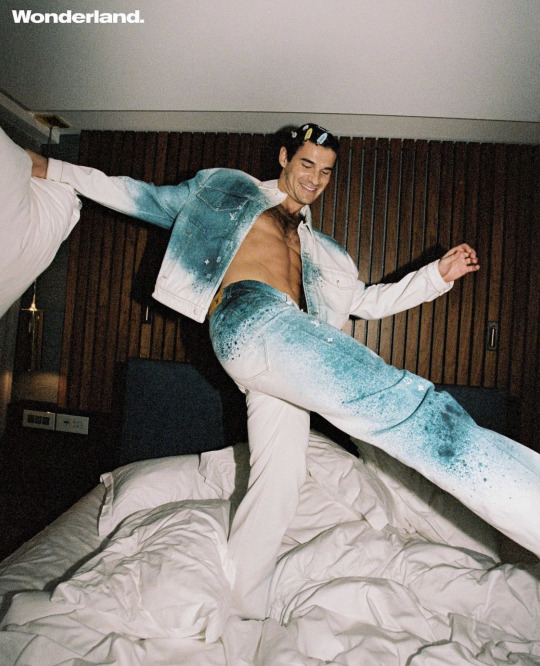

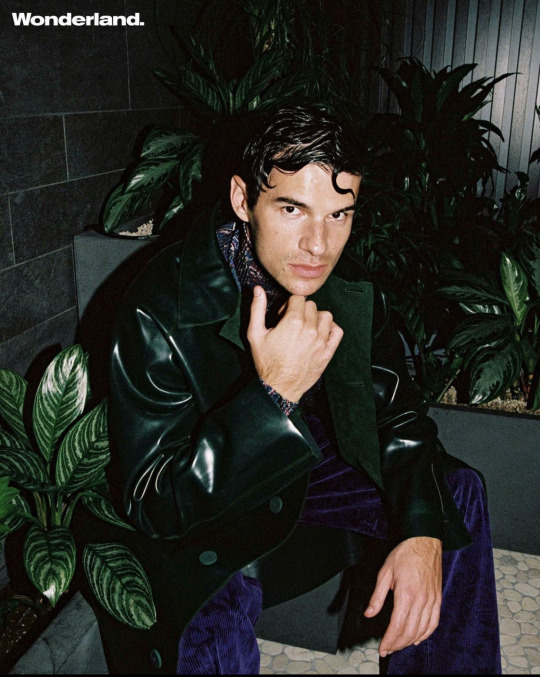
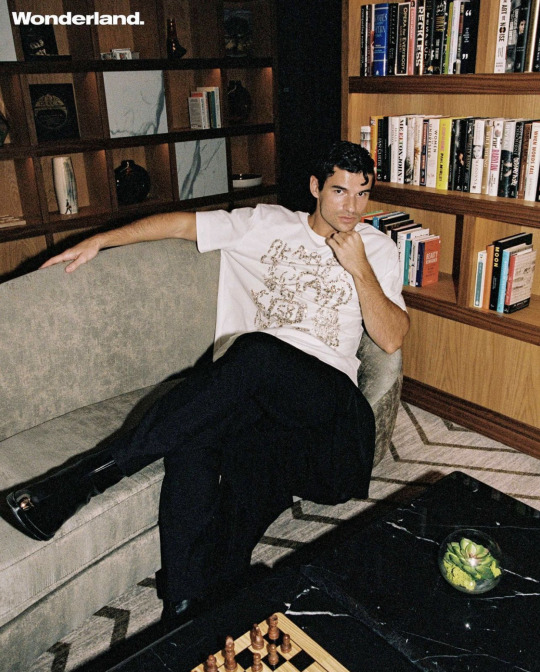


Paul Forman
Wonderland
Photography by Vicky Grout
140 notes
·
View notes
Photo

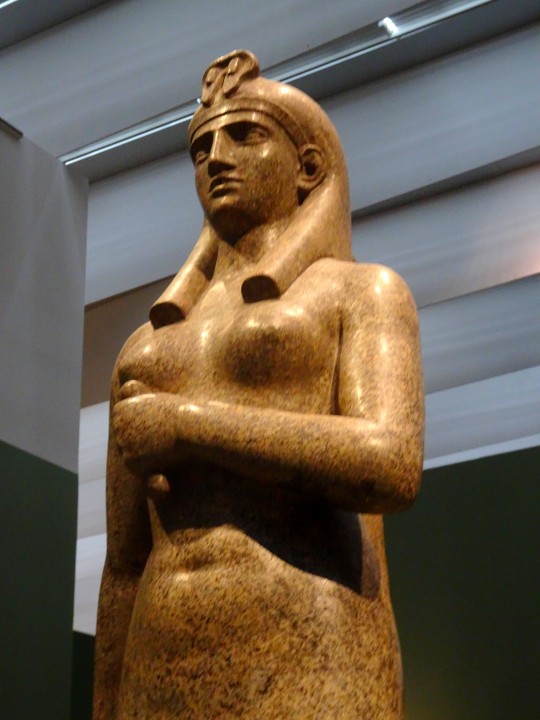
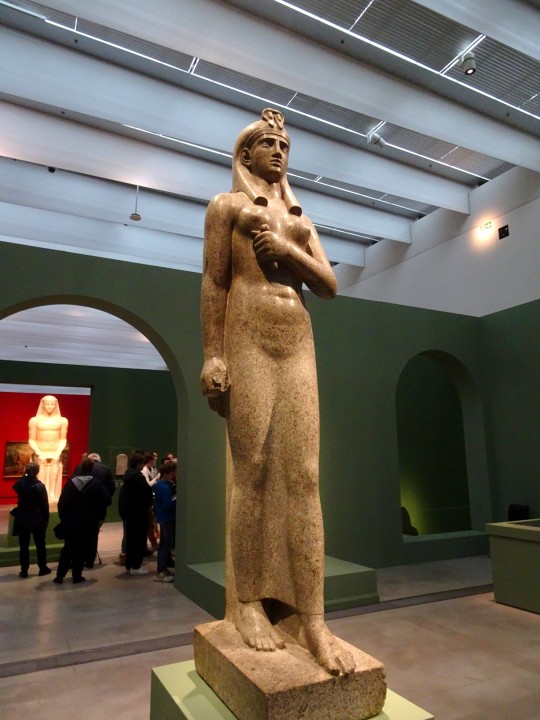
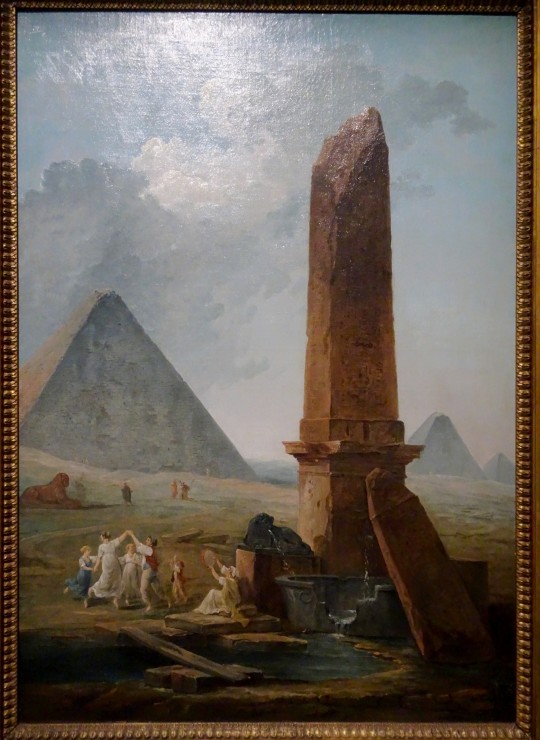



Au Louvre-Lens, il y avait une expo fort intéressante : “Champollion - La Voie des Hiéroglyphes”, sur l’homme, son époque, l’image de l’Egypte en Europe avant l’Egyptologie....
- Léon Cogniet - "Portrait de Jean-François Champollion, Egyptologue”
- les 2 suivantes : Antoine-Guillaume Grandjacquet - “Isis”
- les 2 d’après : Hubert Robert - "Farandole au milieu de monuments égyptiens”
- François Nicolas Delaistre - "Lion égyptien du Capitole”
- Giovanni Paolo Panini - “Caprice architectural avec Prédicateur dans ruines romaines”
#louvre-lens#expo#la voie des hiéroglyphes#champollion#archéologie#égypte#égypte antique#léon cogniet#égyptologie#cogniet#françois nicolas delaistre#delaistre#lionne#giovanni paolo panini#ruines#isis#hubert robert#antoine-guillaume grandjacquet#grandjacquet
4 notes
·
View notes
Text
La Normandie et les peintres 4
La Normandie et les peintres 4

View On WordPress
#Bayeux#Charité romaine#Charles Alexandre Coëssin de la Fosse#Constant Edouard Le Nourichel#Etienne-Nicolas Méhul#François Boucher#Grisélidis#Héro et Léandre#Henri Place#Hylas#Jason et les argonautes#Jean-Louis Rame#La Fontaine#Laurent de La Hyre#Léon-Gustave Ravanne#Léonard Alexis Daligé de Fontenay#Marguerite Godin#Nausicaa#Phrosine et Mélidore#Ulysse
1 note
·
View note
Text
This site compiled their addresses here though Barère's page is missing (here are some of his addresses), Lindet's address is different than the one give here, and though some mail was sent to Couthon where Robespierre lived, I think he had another address too? (Hérault is also just not listed but the site is centered around Thermidor.)

Copy-pasted below for convenience. I added their birthdates and astrological signs (for those who care about that):
Jean-Baptiste Robert Lindet
Age : Né à Bernay (Eure), 48 ans en thermidor. [2 mai 1746 ♉]
Adresse : 68, rue de la Sourdière.
Métier : Avocat
Fonctions : Député de l’Eure, membre du Comité de salut public du 6 avril 1793 au 7 octobre 1794
Antoine Louis Léon de Saint-Just
Age: Né à Décize, 26 ans en Thermidor an II [25 août 1767 ♍]
Adresse: 3, rue Caumartin, 2ème étage (depuis mars 1794), à la même adresse que Thuillier. Il demeurait auparavant à l’hôtel des États-Unis, rue Gaillon.
Fonction(s): Député de l’Aisne à la Convention depuis le 5 septembre 1792, membre du Comité de Salut Public depuis le 10 juin 1793.
Georges-Auguste Couthon
Age : Né à Orcet, 38 ans en thermidor [22 décembre 1755 ♑]
Adresse : 366, rue Saint Honoré
Profession : Avocat
Fonction(s) : Elu député du Puy-de-Dôme à la Convention le 6 septembre 1792. Membre du Comité de salut public du 10 juin 1793 au 9 Thermidor an II.
André Jeanbon, dit JEAN BON SAINT-ANDRÉ
Age : Né à Montauban, 45 ans en thermidor [25 février 1749 ♓]
Adresse : 7 rue Gaillon
Profession : Marin, puis pasteur
Fonction(s) : Elu député du Lot à la Convention le 5 septembre 1792, membre du Comité de salut public depuis le 10 juin 1793. Fréquemment en mission pour superviser les opérations maritimes, il est absent de Paris le 9-Thermidor.
Pierre-Louis Prieur, dit PRIEUR de la MARNE
Age : Né à Sommesous (Marne), 37 ans en thermidor [1er août 1756 ♌]
Surnom : Appelé Prieur de la Marne (pour le différencier de Prieur de la Côte-d’Or)
Adresse : 11, rue Helvetius
Métier : Avocat
Fonction(s) : Député de la Marne à la Convention depuis le 3 septembre 1792, membre du Comité de salut public du 10 juillet 1793 au 13 thermidor an II (31 juillet 1794), puis à nouveau du 15 vendémiaire au 15 pluviôse an III (6 octobre 1794-3 février 1795).
Absent de Paris au moment du 9-Thermidor.
Maximilien Marie Isidore de Robespierre
Age : Né à Arras, 36 ans en thermidor. [6 mai 1758 ♉]
Adresse : 366 rue Saint-Honoré (numérotation actuelle : 398)
Métier : Avocat
Fonction(s) : Député de Paris à la Convention nationale depuis le 5 septembre 1792 ; membre du Comité de salut public depuis le 27 juillet 1793
Claude-Antoine Prieur-Duvernois, dit PRIEUR de la CÔTE-d'OR
Age : Né à Auxonne, 30 ans en thermidor [22 décembre 1763 ♑]
Surnom : Appelé Prieur de la Côte-d’Or (pour le différencier de Prieur de la Marne)
Adresse : 5, rue Caumartin
Profession : Ingénieur militaire
Fonction(s) : Elu député de la Côte-d’Or à la Convention le 5 septembre 1792. Membre du Comité de salut public du 14 août 1793 au 16 vendémiaire an III (7 octobre 1794).
Lazare Nicolas Marguerite Carnot
Age : Né à Nolay, 41 ans en thermidor. [13 mai 1753 ♉]
Adresse : 2 rue Florentin
Métier : Mathématicien, physicien, militaire
Fonction(s) : Elu député du Pas-de-Calais à la Convention nationale le 5 septembre 1792 ; membre du Comité de salut public depuis le 14 août 1793, il le quitte le 7 octobre 1794 mais y siège à nouveau un mois plus tard, jusqu’au 6 mars 1795.
Jacques-Nicolas Billaud, dit BILLAUD-VARENNE
Age : Né à La Rochelle, 38 ans en Thermidor an II [23 avril 1756 ♉]
Adresse : 40 rue Saint-André-des-Arts
Métier : Avocat
Fonction(s) : Député de Paris à la Convention depuis le 7 septembre 1792, membre du Comité de Salut Public depuis le 5 septembre 1793
Jean-Marie Collot, dit COLLOT d'HERBOIS
Age : Né à Paris, 45 ans en Thermidor an II [19 juin 1749 ♊]
Adresse : 4 rue Favart (3ème étage)
Métier : Acteur, directeur de théâtre
Fonction(s) : Elu député de Paris à la Convention le 6 septembre 1792, membre du Comité de Salut Public depuis le 5 septembre 1793.
#the csp#committee of public safety#comité de salut public#antoine saint just#maximilien robespierre#robert lindet#lazare carnot#claude antoine prieur#jacques nicolas billaud varenne#collot d'herbois#georges couthon#andré jeanbon saint andré#pierre louis prieur#prieur duvernois#prieur de la côte d'or#prieur de la marne#jeanbon saint-andré#bertrand barère
36 notes
·
View notes
Note
Is there a list of frev figures who claimed to be at the storming of the Bastille? The people I know who said they at least witnessed it is pretty eclectic like Herault, Léon and Saint-Just.
I found all the (official?) ”vainqueurs de la Bastille” listed in alfabethical order here (1889). However, according to Michael J. Sydenham’s Léonard Bourdon: The Career of a Revolutionary, 1754-1807, who’s subject of study claimed to belong to this group, simply holding this title was not a guarantee that you had actually taken part in the storming itself:

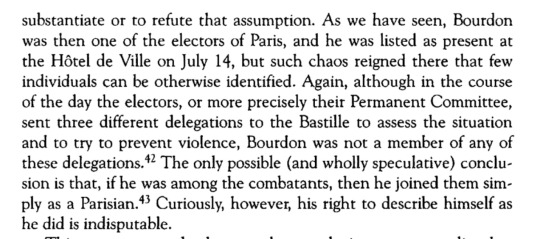
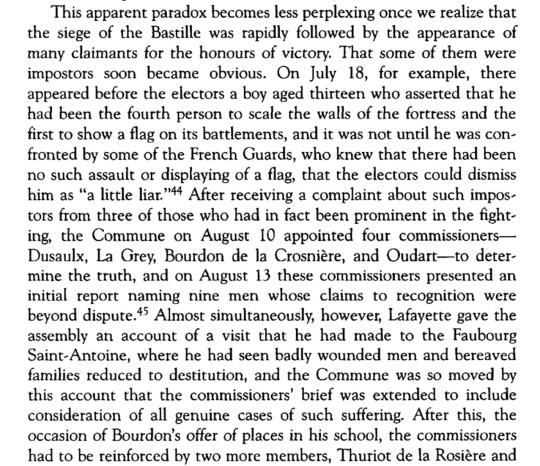


The only people found on the list that I myself recognized were those of the dantonist Louis Legendre, the girondin Claude Fauchet and the general Antoine Joseph Santerre. I therefore don’t know if the people claiming to have participated in the storming here below are just lying (saying you played a role in it after all being something that would easily better your patriotic reputation) or if their participation just wasn’t recorded (which doesn’t sound particulary hard to be true either):
Stanislas Fréron claims in a letter to Lucile Desmoulins dated October 18 1793, that both he, Barras and La Poype ”besieged” the Bastille.
Pierre Nicolas Berryer wrote in his memoirs that the Convention deputy Bourdon d’Oise participated in the storming of the Bastille, and still kept the blood stained coat he had worn during it five years later:
At the same time, and as if he felt the need to convince me even more of the strength of his mind, [Bourdon] took out from under his bed an oblong casket, in which was tucked the coat he had worn on the day of the storming of the Bastille… […] He took great care to point out to me that his coat was still covered with stains from the blood he had spilled at the Bastille.
Albert Mathiez summarized in the article La vie de Héron racontée par lui-même (1925) a memoir the Committee of General Security spy François Héron wrote while imprisoned after thermidor. In it, he would have claimed to have participated in the storming of the Bastille, as well as the women’s march on Versailles, the demonstration of June 20 and the Insurrection of August 10.
According to Dictionnaire des parlementaires français (…) de 1789 à 1889, Jacques-Alexis Thuriot took part in the storming.
Regarding some more well known guys and their Bastille activities, Desmoulins, in a letter written to his father written July 16, leaves a rather detailed description of the storming. Through the following part, he does however indicate that he himself missed it:
Then, the cannon of the French Guards made a breach. Bourgeois, soldiers, everyone rushes forward. An engraver climbs up first, they throw him down and break his legs. A luckier French guard followed him, seized a gunner, defended himself, and the place was stormed in half an hour. I started running at the first cannon shot, but the Bastille was already taken, in two and a half hours, a miracle that is.
Camille also adds that, on July 15, he was among the people who scaled the ruins of the stormed Bastille:
However, I felt even more joy the day before, when I climbed into the breach (montai sur la brèche) of the surrendered Bastille, and the flag of the Guards and the bourgeois militias was raised there. The most zealous patriots were there. We embraced each other, we kissed the hands of the French guards, crying with joy and intoxication.
On July 23 1789, Robespierre wrote a letter to Antoine Buissart telling him he had gotten to see the ”liberated” Bastille, but he had of course not participated in the storming himself:
I’ve seen the Bastille, I was taken there by a detachment of the brave bourgeois militia that had taken it; because after leaving town hall, on the day of the king's trip, the armed citizens took pleasure in escorting out of honor the deputies they met, and they could only march among acclamations from the people. What a delightful abode the Bastille has been since it came into the power of the people, its dungeons are empty and a multitude of workers work tirelessly to demolish this odious monument to tyranny! I could not tear myself away from this place, the sight of which only gives sensations of pleasure and ideas of liberty to all good citizens.
According to Danton: le mythe et l’histoire (2016), Danton did not take part in the actual storming of the Bastille, however, the following day he went to the abandoned prison and took the provisional governor hostage:
Absent from the storming of the Bastille, it was on the night of July 15 to 16 that Danton took action. At the head of a patrol of the bourgeois guard of his district, of which he proclaimed himself captain, he claimed, we do not know in what capacity, to enter the "castle of the Bastille,” placed under the control of the elector Soulès, as provisional governor. Without worrying about his powers, Danton has him kidnapped and taken to City Hall, surrounded by a threatening crowd. But Soulès was released the next day upon the intervention of La Fayette; Danton's initiative was openly disavowed and blamed by the assembly of electors.
According to Clifford D. Connor, Marat wrote the following about his activities on July 14 1789 in number 36 of l’Ami du peuple (12 November 1789):

#lots of thermidorians who were involved in the storming…#french revolution#frev#bastille#danton was really unhinged here…
25 notes
·
View notes
Note
uhh okay I just have to get this out before i explode because it has been bouncing around my head so uh um what if Professor Layton was French and took place in France? Please please please dump everything on us I want to hear the lore and nuance of French Layton; whose names change, what are they like now, how does the story change because it’s Paris and not London (assuming because capital cities), that kind of stuff.
Maybe change Luke’s name to Luc or something. Not sure about Hershel Layton, though. Speaking of which I know Layton always says things remind him of a puzzle so I’d imagine he instead says ce me rappelle un puzzle and then when Luc solves a puzzle he says je l‘ai résolu, professeur!!!
Then there’s Clive “je préfère y penser comme la justice” Colombe (changed his surname there) because Guilluame Faucons blew up his parents or whatever
Rereading this I asked for the nuances of French Layton and then thought too much into it myself. whoops.
this started because i was thinking about slavic professor layton and somehow moved from prague to paris lol

!!! Alright I'll try to calm it with the maj and the exclamation points lol, but I want you to know I am very very happy and excited about this !! Professeur Layton woohoo !! And I am repeating myself but your French is amazing, Luke DOES say that kfjbhefhkb (Also you found such great names so fast how did you do that ??)
I am going to focus on the French Adaptation idea (hence the screenshot) ! =) I think I will talk about actual French Unwound Future eventually, but it'll be its own separate post. I simply MUST focus on this first, like the potential and sheer fun of it ? I have IDEAS.
Names and setting (Oh yes we are going there) under the cut !!
Starting with the names !!
Hershel Layton : Definitely changing Layton, I guess Léton could work ? (Little reference to French BD Les Légendaires lol) Landon is very cool tho, it reminds me of London too ! For the first name you and a friend of mine suggested Herbert, which is a great idea but I'm not too sure about losing the Yiddish etymology :( Hershel could stay I guess. I did play with Léon Léton for a moment (Léon is French equivalent for Yiddish name Lejb + we keep the animal etymology) but it sounds really terrible lol, so up to you !!
Luke Triton : You're absolutely right he would be Luc Triton !! Middle name is most definitely something like Richard lol
Flora Reinhold : Definitely agree with Flore ! Reinhold is hard because it's Renaud in French but like,,, Renaud has CONNOTATIONS. (There is a French singer called that way and people often make fun of him). Soooo same friend came up with Flore de Raynald. Looking back, I'm not sure about the "ay" ? Anyway, I added the "de" because French people used to have one in their names if they were rich/noble !!
Clive Dove : Okay. Bear with me. Bear with me please. But Nicolas Colombe. Like you said, Dove = Colombe. But Clive doesn't have any equivalent in French : you suggested Clovis and I think it really is the best, most logical option (it does make him look like a 5th century king but also Clive is like that lol) !! However I did remember that Clive's Japanese name is Klaus, and Klaus is strictly equal to Nicolas in French. So yeah idk, Nicolas Colombe sounds like a Miraculous Ladybug name lol
Bill Hawks : You're 100% right, this is our premier ministre Guillaume Faucon. =)
Dimitri Allen : We had also come up with Dimitri Alain (it's either that or pronouncing it Allant, which is just ugly lol) so perfect !!
Claire Foley : I'll be honest I don't even know how Foley is supposed to be pronounced…? But it has something to do with sound in filmmaking apparently, so you know. Claire Echo or something
That's it for the names !! Now I simply NEED to talk about something really really cool- the setting. Why that you may ask ? Because there actually are caves underneath Paris, and they're not just any caves. (They're magic caves- alright sorry ijfginknf)
So yeah the caves under Paris are not huge oval caves like the one in Unwound Future, it's more like a series of corridors that go deep under the whole city. Also it is HUGE, like only 0,5% is open to visitors and this is already 1,7km/1,1 mile !!
The best part ?? This 0,5%. It's actually an ossuary (Known as Les Catacombes de Paris). This place is very popular, people love to go there, and it's already been the setting of many many books- so why not you know ? Even though I know you couldn't/shouldn't build a mecha there (no room for it and you'd be destroying a real 18th century monument) + this doesn't really look like the future lol
But you could TOTALLY adapt the story so that Layton and Luc have to go to the Catacombs and then you have a sick setting and you could have booby traps, a not-so-subtle-but-very-cool life or death mood, and above all. You can have Clive being a madman spending all of his time six feet under in the catacombs. Gloomy. Upsetting ? Fun !!
Also the mecha should totally be on that stupid island in the middle of Paris. That or you replace the lighthouse by the Eiffel Tower.
#Professeur Layton et le Secret des Catacombes#You KNOW you want to play that game lol#Also I genuinely admire your naming abilities like all of these are fire !!#It takes me DAYS to make a plausible AU how are you doing this jzndklj#Professeur Layton#Professeur Layton et le destin perdu#Hershel layton#Luke triton#Clive dove#(Not tagging the others because I don't want to flood lol)#ask#TW : bones#(I think ? We do talk about catacombs)#TW : mention of death
11 notes
·
View notes
Text

Du mou dans la gâchette - Film de Louis Gropsierre avec Bernard Blier et Jean Lefebvre, 1967.
Synopsis : Nicolas Pappas et Léon Dubois, deux tueurs particulièrement calamiteux, arrivent à Paris, où un chef de gang en mal de « personnel », Jo Laguerre, les a engagés pour couvrir la fuite des auteurs d'un hold-up. Ils s'en tirent tant bien que mal et se voient ensuite chargés de liquider un certain Magnum.
4 notes
·
View notes
Text

Kouchner, BHL, Ménard : Macron ne compte qu’une poignée de soutiens pour l'envoi de militaires en Ukraine
Les déclarations d’Emmanuel Macron sur l’envoi de militaires en Ukraine ont provoqué un tollé auprès des alliés de la France et dans les oppositions. Le président n’a pu compter que sur le soutien d’une poignée de personnalités secondaires.
«Oui je suis favorable à des troupes au sol. C’est pas facile à dire, ça va coûter des sacrifices»: l’ancien ministre des Affaires étrangères (2007-2010) Bernard Kouchner a tenu à apporter son soutien à Emmanuel Macron après ses propos polémiques tenus le 26 février sur l’envoi de troupes en Ukraine. Le lendemain, sur l’antenne de la chaîne LCI, l’ancien élu socialiste, qui avait été un des promoteurs de la guerre en Irak en 2003, a ainsi affirmé à propos de l’Ukraine qu’il fallait «montrer que nous sommes prêts à défendre cette démocratie naissante, cette démocratie affirmée». Des propos qui ont vivement fait réagir ses détracteurs sur les réseaux sociaux. L’avocat Régis de Castelnau a ainsi moqué ces propos en déclarant sur X (ex-Twitter) : «La fermeté il connaît. Par exemple, il a fermement couvert les trafics d’organes de la mafia kosovare quand il était proconsul là-bas. Ensuite, il a été très ferme avec son ami qui violait régulièrement son fils.»
Même Tenzer évoque une «erreur de l’annoncer de cette manière» La prise de position de Bernard Kouchner a trouvé un écho sur France Info où l’essayiste et haut-fonctionnaire Nicolas Tenzer a apporté son soutien au président tout en admettant qu’il y avait «peut être eu une erreur de l’annoncer de cette manière». «Sur le fonds, c’est une chose qui me paraît indispensable», a-t-il ajouté. Pour ce promoteur des thèses néoconservatrices, antirusses et atlantistes, directeur de publication du média Desk Russie, envoyer des troupes françaises en Ukraine aura «un effet dissuasif sur la Russie». Nicolas Tenzer, qui ne craignait pas d'affirmer en janvier 2022 sur France 24 que l'OTAN n'avait «jamais agressé personne», avait par ailleurs été critique sur le «dialogue de sécurité» qu’avait souhaité Emmanuel Macron, affirmant que Vladimir Poutine ne comprenait que la force. BHL aussi, bien sûr Le philosophe Bernard-Henri Lévy a lui aussi tenu à défendre le président en dénonçant «beaucoup de mauvaise foi chez ceux (notamment les propagandistes de Poutine) qui font dire à Macron qu’il veut envoyer des troupes au sol en Ukraine». Et d’expliquer que le président français avait en réalité dit que «la Russie ne peut ni ne doit gagner cette guerre».
Côté élus, seule la majorité a défendu la prise de position du président, ainsi que l’eurodéputé Raphaël Glucksmann, lequel avait pris à partie son concurrent communiste aux élections européennes Léon Deffontaines en invoquant «la résistance antifasciste, la défense du droit et la solidarité avec les démocraties agressées». Un eurodéputé désavoué par le secrétaire général du Parti socialiste Olivier Faure, qui a dénoncé une «surenchère verbale irresponsable». Celui qui était signataire d’une tribune défendant la guerre américaine en Irak a finalement tenté de s’échapper de la polémique qu’il avait provoquée à gauche. «Recentrons le débat : l’urgence, c’est de livrer toutes les armes nécessaires à la résistance ukrainienne et d’accroître massivement nos sanctions contre le régime russe», a-t-il assuré.
Le 26 février au soir, Emmanuel Macron déclarait à l'issue d'une conférence de soutien à l'Ukraine. «Il n'y a pas de consensus aujourd'hui pour envoyer de manière officielle, assumée et endossée des troupes au sol. Mais en dynamique, rien ne doit être exclu. Nous ferons tout ce qu'il faut pour que la Russie ne puisse pas gagner cette guerre». Le chef de l'Etat français a depuis été désavoué par la quasi-totalité des dirigeants européens, mais aussi par Washington. En France, les oppositions ont aussi fustigé les propos d'Emmanuel Macron.
RTNews.
2 notes
·
View notes
Text
Céline, une fois de plus, avait, comme Drumont, tout compris de ce qui arrivait à la France.
Elle allait devenir un Hexagone. Un espace occupé par des tartuffes prolétariens (Céline), des mendiants ingrats (Léon Bloy) et des narbonnoïdes.
On croit Drumont ou Céline antisémites, c’est faux. Ils étaient narbonophobes, hexagonophobes.
Comme les grands cathos de l’époque, Bloy, Bernanos, ils ont crié dans le désert. Ce désert français où l’on ne les a pas entendus et où ne subsistent que des abbayes recyclées en hôtels pour cad’ sup’ et des villages relouqués par l’industrie du tourisme pour des bataves friqués pressés de se faire casser la tête à coup de son et lumière.
Un peuple de pouilleux, disait Céline qui savait de quoi il parlait du fond de ses banlieues à problèmes.
C’est quoi un narbonnoïde ?
Un être à forme vaguement humaine et qui a des papiers français.
Il vient du fond des âges ténébreux, il a dévoré le cromagnon, il a massacré l’aristocratie celte, détruit l’ordre romain. Il a violé, pillé brûlé et surtout baillé. Il a fait l’hérétique au moyen âge, le libertin avec Gilles de Rais, Sade ou les présentateurs télé, la Révolution et ses sacrifices humains, l’épuration et ses sacrifices humains, et depuis il se repose.
Il fait grève tout le temps, il attend sa retraite avec angoisse (un peuple de pêcheurs à la ligne disait Drieu dans son Journal). Il fait de la trottinette ou du roller, baise en tas, échange sa femme ou tripote ses gosses qu’il appelle Kevin ou Mégane, métisse sa fille et cultive son obésité. Il chausse des baskets, bouffe Mac Do, défile contre Seillière ou Le Pen ou Bush ou tout le monde, et surtout il idolâtre sa citoyenneté. Sa citoyenneté de merde made in Monde-diplo ou Charlie-Hebdo.
Nicolas Bonnal
11 notes
·
View notes
Text
an absolute list of films i’d like to watch (so far)
thanks to the Letterboxd community for always recommending the most unhinged pieces ever
Gummo, Harmony Korine (1997)
Hard Candy, David Slade (2005)
House, Nobuhiko Obayashi (1977)
Ichi the Killer, Takashi Miike (2001)
Kids, Larry Clark (1995)
Léon: The Professional, Luc Besson (1994)
Oldboy, Park Chan-wook (2003)
Once Upon a Time in America, Sergio Leone, (1984)
Fantastic Planet, René Laloux (1973)
Punch Drunk-Love, Paul Thomas Anderson (2002)
[REC], Jaume Balagueró & Paco Plaza (2007)
The Rocky Horror Picture Show, Jim Sharman (1975)
Shock Treatment, Jim Sharman (1981)
Sleepaway Camp, Robert Hiltzik (1983)
The Warriors, Walter Hill (1979)
Videodrome, David Cronenberg (1983)
Taxi Driver, Martin Scorsese (1976)
The Ninth Configuration, William Peter Blatty (1980)
Flowers for Algernon, Jeff Bleckner (2000)
Mona Lisa, Neil Jordan (1986)
The Machinist, Brad Anderson (2004)
Miller’s Crossing, Joel Coen (1990)
Apocalypse Now, Francis Ford Coppola (1979)
The Farewell, Lulu Wang (2019)
Trash Humpers, Harmony Korine (2009)
Pixote, Héctor Babenco (1980)
Julien Donkey-Boy, Harmony Korine (1999)
Last Night, Don McKellar (1998)
Duck Butter, Miguel Arteta (2018)
Stalker, Andrei Tarkovsky (1979)
The Pianist, Roman Polanski (2002)
Reservoir Dogs, Quentin Tarantino (1992)
Blue Velvet, David Lynch (1986)
At Eternity’s Gate, Julian Schnabel (2018)
Birdman, Alejandro González Iñárritu (2014)
Climax, Gaspar Noé (2018)
Shirkers, Sandi Tan (2018)
A Ghost Story, David Lowery (2017)
Carol, Todd Haynes (2015)
Lupin the Third: The Castle of Cagliostro, Hayao Miyazaki (1979)
Baby Driver, Edgar Wright (2017)
The Revenant, Alejandro González Iñárritu (2015)
She’s Gotta Have It, Spike Lee (1986)
I Don’t Feel at Home in This World Anymore, Macon Blair (2017)
It Comes at Night, Trey Edward Shults (2017)
Buster’s Mal Heart, Sarah Adina Smith (2016)
Cam, Daniel Goldhaber (2018)
Struggle: The Life and Lost Art of Szukalski, Irek Dobrowolski (2018)
I Think We’re Alone Now, Reed Morano (2018)
Skins, Eduardo Casanova (2017)
The Fundamentals of Caring, Rob Burnett (2016)
About Time, Richard Curtis (2013)
The Bad Batch, Ana Lily Amirpour (2016)
The Highwaymen, John Lee Hancock (2019)
Three Billboards Outside Ebbing, Missouri, Martin McDonagh (2017)
Natural Born Killers, Oliver Stone (1994)
XX, Karyn Kusama & Jovanka Vuckovic & Roxanne Benjamin & St. Vincent (2017)
Cargo, Ben Howling & Yolanda Ramke (2017)
Residue, Alex Garcia Lopez (2015)
Joan Didion: The Center Will Not Hold, Griffin Dunne (2017)
Joshua: Teenager vs. Superpower, Joe Piscatella (2017)
Chasing Trane, John Scheinfeld (2016)
Tallulah, Siân Heder (2016)
Expedition Happiness, Felix Starck & Selima Taibi (2017)
Bottom of the World, Richard Sears (2017)
Super Dark Times, Kevin Phillips (2017)
Notes on Blindness, Pete Middleton & James Spinney (2016)
Newness, Drake Doremus (2017)
ReMastered: The Two Killings of Sam Cooke, Kelly Duane de la Vega (2019)
Paddleton, Alexandre Lehmann (2019)
Juanita, Clark Johnson (2019)
Temple, Michael Barrett (2017)
Maya Angelou: And Still I Rise, Bob Hercules & Rita Coburn Whack (2016)
P, Paul Spurrier (2005)
I Am Happiness on Earth, Julián Hernández (2014)
Carrie Pilby, Susan Johnson (2016)
Belief: The Possession of Janet Moses, David Stubbs (2015)
I Called Him Morgan, Kasper Collin (2016)
A Family Affair, Tom Fassaert (2015)
Q, Sanjeev Gupta (2017)
Boyhood, Richard Linklater (2014)
Thelma & Louise, Ridley Scott (1991)
Brick, Rian Johnson (2005)
The Royal Tenenbaums, Wes Anderson (2001)
Moonlight, Barry Jenkins (2016)
Mulholland Drive, David Lynch (2001)
Solaris, Andrei Tarkovsky (1972)
Lake Mungo, Joel Anderson (2008)
War of the Worlds, Steven Spielberg (2005)
Tetsuo: The Iron Man, Shinya Tsukamoto (1989)
Mady, Panos Cosmatos (2018)
Raw, Julia Ducournau (2016)
The Neon Demon, Nicolas Winding Refn (2016)
The Love Witch, Anna Biller (2016)
Tusk, Kevin Smith (2014)
Black Swan, Darren Aronofsky (2010)
A Serbian Film, Srđan Spasojević (2010)
Antichrist, Lars von Trier (2009)
Paprika, Satoshi Kon (2006)
Audition, Takashi Miike (1999)
Fear and Loathing in Las Vegas, Terry Gilliam (1998)
Perfect Blue, Satoshi Kon (1997)
Suspiria, Dario Argento (1977)
Salò, or the 120 Days of Sodom, Pier Paolo Pasolini (1975)
Irreversible, Gaspar Noé (2002)
Teeth, Mitchell Lichtenstein (2007)
Guinea Pig 2: Flower of Flesh and Blood, Hideshi Hino (1985)
I Stand Alone, Gaspar Noé (1998)
Begotten, E. Elias Merhige (1989)
Dekalog, Krzysztof Kieślowski (1989)
Dancer in the Dark, Lars von Trier (2000)
Shoplifters, Hirokazu Kore-eda (2018)
Honey Boy, Alma Har’el (2019)
The Inner Scar, Philippe Garrel (1972)
The Handmaiden, Park Chan-wook (2016)
Funny Games, Michael Haneke (1997)
$9.99, Tatia Rosenthal (2008)
A Girl Walks Home Alone at Night, Ana Lily Amirpour (2014)
In The Mood for Love, Wong Kar-wai (2000)
Stranger Than Paradise, Jim Jarmusch (1984)
Quadrophenia, Franc Roddam (1979)
Blow-Up, Michaelangelo Antonioni (1966)
Do the Right Thing, Spike Lee (1989)
Christiane F., Uli Edel (1981)
Grey Gardens, Albert Maysles & David Maysles & Muffie Meyer & Ellen Hovde (1975)
The Tribe, Myroslav Slaboshpytskyi (2014)
Uncut Gems, Josh Safdie & Benny Safdie (2019)
Persona, Ingmar Bergman (1966)
Wild Strawberries, Ingmar Bergman (1957)
The Silence, Ingmar Bergman (1963)
Portrait of a Lady on Fire, Céline Sciamma (2019)
The Lighthouse, Robert Eggers (2019)
Promising Young Woman, Emerald Fennell (2020)
The Human Condition III: A Soldier’s Prayer, Masaki Kobayashi (1961)
As I Was Moving Ahead Occasionally I Saw Brief Glimpses of Beauty, Jonas Mekas (2000)
X, Ti West (2022)
Everything Everywhere All at Once, Daniel Scheinert & Daniel Kwan (2022)
The Unbearable Weight of Massive Talent, Tom Gormican (2022)
The Conversation, Francis Ford Coppola (1974)
Sufjan Stevens: Carrie & Lowell Live, Aaron Craig & Alex Craig (2017)
La Haine, Mathieu Kassovitz (1995)
My Life as a Zucchini, Claude Barras (2016)
The Wolf House, Cristóbal León & Joaquín Cociña (2018)
Come and See, Elem Klimov (1985)
Noisy Requiem, Yoshihiko Matsui (1988)
Eyes Without a Face, Georges Franju (1960)
Angel’s Egg, Mamoru Oshii (1985)
Dogville, Lars von Trier (2003)
Pink Flamingos, John Waters (1972)
Are you lost in the world like me?, Steve Cutts (2016)
42 notes
·
View notes
Photo
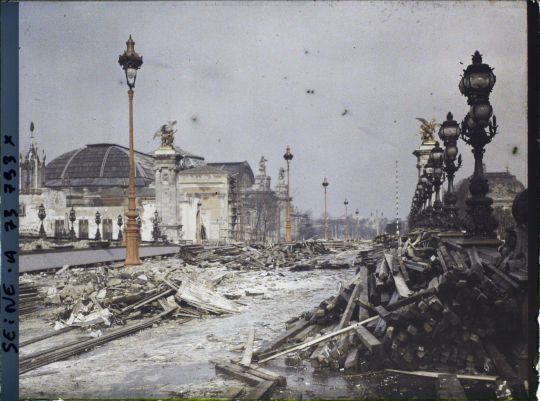
Auguste Léon - Paris (VIIIe arr.), L' exposition des arts décoratifs, démolition des pavillons sur le pont Alexandre III et l'ancienne avenue Nicolas II (actuelle avenue Winston Churchill), 1925.
3 notes
·
View notes
Text
L’Europe d’une guerre à l’autre (VI – 1) – Léon Trotsky, père du nazisme allemand
Par Nikolay STARIKOV – Oriental Review
«Bizarrement, l’Angleterre, monarchiste au fond d’elle-même et conservatrice chez elle, a toujours agi dans ses affaires étrangères comme la patronne des aspirations démagogiques, toujours en faveur des mouvements populaires qui cherchaient à affaiblir la base de la monarchie.»
Mémorandum de Peter Durnovo au Tsar Nicolas II, février 1914.
Continue reading…
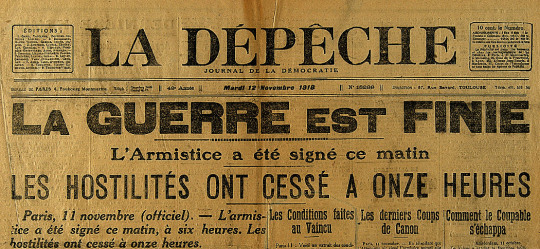
View On WordPress
1 note
·
View note
Text
Arno é contatado pelo Marquês de Sade, que lhe pede ajuda para encontrar o manuscrito de Nicolas de Condorcet, escondido na tumba sob a cidade, em troca de um navio para levar Arno ao Egito. Durante sua busca, Arno encontra invasores de tumbas liderados pelo capitão Philippe Rose (Taylor Price), um subordinado de Napoleão, que deseja recuperar um artefato - uma Maçã do Éden - de um templo Precursor sob a igreja da cidade. Arno descobre que o manuscrito foi roubado por uma criança ladrão, Léon (Eamon Stocks), que foi capturado pelos invasores. Arno resgata Léon e recupera o manuscrito, mas se recusa a ajudá-lo a deter os invasores. Depois de uma visão de Élise e de ouvir os apelos de Léon, porém, ele muda de ideia.
Depois de descobrir a localização do templo e recuperar a chave de um dos oficiais de Napoleão, Arno abre a porta do templo, mas é emboscado por Rose, que traiu Napoleão e deseja ficar com a Maçã. Arno sobrevive à emboscada, mata Rose e recupera a Maçã, usando-a para repelir os invasores restantes e escapar. Mais tarde, ele conhece de Sade e lhe dá o manuscrito. Arno decide ficar na França, e contata a Irmandade para entregar a Maçã ao Egito, longe do alcance de Napoleão, que é preso por deserção e traição.
youtube
0 notes
Text
★ 12 janvier 2024 > bit.ly/hobo-12janvier2024

★ Les nouveautés de nos éditrices et éditeurs sorties le 12 janvier 2024 > bit.ly/hobo-12janvier2024
COMITÉ SOULÈVEMENTS 14, Reprendre, démanteler, communiser, Grevis
Joseph ANDRAS & Kaoutar HARCHI, Littérature et révolution, Divergences
Mačko DRÀGÀN, Abrégé de littérature-molotov, Terres de Feu
Pascal NICOLAS-LE STRAT, Faire recherche en commun, Éditions du commun
Errico MALATESTA, Conversations sur l’anarchie, Nada
Ulrike MEINHOF, Flingue, conscience et collectif, Premiers Matins de Novembre
COLLECTIF, Pour le meilleur et pour le Pile, Les Étaques
COLLECTIF, Habitante 5, Audimat | Éditions Présentes
Javier SÁEZ & Sejo CARRASCOSA, Enculé !, Les Grillages
Florence-Agathe DUBÉ-MOREAU, Hors jeu, Remue-ménage
Lundy BANCROFT, Pourquoi fait-il ça ?, Éditions Libre
Luce FABBRI, Leçons sur la définition et l'histoire du fascisme, Noir et rouge
Marina GARRISI, Découvrir Lénine, Les Éditions sociales
Lars LIH, Lénine, une enquête historique, Les Éditions sociales
Georg LUKACS, La Pensée de Lénine, Communard.e.s
Roberto MARTÍNEZ CATALÁN, Destination Saragosse, Le Coquelicot
Alex RATCHARGE, Entre un néant et un autre, Des mondes à faire
J. D. KURTNESS, Aquariums, Dépaysage
Hervé BRIZON, La Vie rêvée de sainte Tapiole, Terrasses
Jacques ROBERTI, À la belle de nuit, Lapidaires
Léon DEFFOUX, Un communard, Lapidaires
JUSTHOM, Moi, un homme méprisé, humilié, martyrisé par sa compagne, et enfin libre, Éditions libertaires
Coline PICAUD, Hawa, Le Monde à l'envers
Coline PICAUD, Daiane, Le Monde à l'envers
Anastasia YANOUCHEVSKI, Mains, Ravin bleu
COLLECTIF, Des sentiments, Goater
"Je suis gênée par l'idée d'engagement. Michel Houellebecq ou Sylvain Tesson, en écrivant les livres qu'ils écrivent, eux aussi s'engagent, eux aussi défendent une vision du monde. Il y a, livre après livre, des valeurs qui sont de plus en plus ardemment défendues. Des valeurs nationalistes, sexistes, réactionnaires notamment. Mais d'eux, il ne sera pas dit qu'ils sont des écrivains engagés. Mais : des écrivains. Des écrivains tout court." Kaoutar Harchi
Joseph Andras & Kaoutar Harchi, Littérature et révolution, Divergences.
0 notes
Link
0 notes
Text
La Marche des rois - Chant trad. provençale repris par Bizet dans L'Arlésienne (partition,sheet music)
La Marche des rois - Chant trad. provençale repris x Bizet dans L'Arlésienne (partition,sheet music) Easy Piano Solo arr.
https://youtu.be/KsDBOdWDRwQ

The March of the Kings or The March of the Three Kings or, in Provençal, La Marcho di Rèi is a popular Christmas carol of Provençal origin celebrating Epiphany and the Three Kings. Its revival by Georges Bizet for his Arlésienne popularized the theme.
The precise origins of both the tune and the lyrics are uncertain and debated.
The words are regularly attributed to Joseph-François Domergue (1691-1728), priest-dean of Aramon, in the Gard, from 1724 to 1728, whose name appears on the first manuscript copy dated 1742 and kept at the library of Avignon.
The text is published in the Compendium of Provençal and Francois Spiritual Songs engraved by Sieur Hue published in 1759. Subsequently, the work was included in the various editions of the Provençal Christmas collection by the poet and composer of the 17th century Nicolas Saboly (1614-1675) to which it has often — and erroneously — been attributedNote.
According to the 1742 document, the song uses the air of a Marche de Turenne1. This mention corresponds to the established practice of noëlistes consisting in placing their texts on “known” French songs spread by the printing press. One hypothesis is that this Marche de Turenne would be a military march dating back to the 17th century, in honor of the victories of Marshal de Turenne, which some authors wanted to attribute to Lully, although no document corroborates this attribution.
An Avignon tradition rather dates the Marche de Turenne back to the 15th century, at the time of King René (1409-1480) while certain authors from the end of the 19th and the beginning of the 20th century leaned towards a reference to Raymond de Turenne (1352 -1413), known as Le Fléau de Provence, grandnephew of Pope Clement VI and nephew of Pope Gregory XI.
In the 21st century, several American researchers postulate that the March of the Kings has a medieval origin dating back to the 13th century; it could then be one of the oldest Christmas carols listed with Veni redemptor gentium, and perhaps the first entirely composed in the vernacular language, and not in Latin.
According to research carried out by the scholar Stéphen d'Arve at the end of the 19th century, the only known score is that of Étienne-Paul Charbonnier (1793-1872), organist at the cathedral of Aix-en-Provence , who — perhaps taking it from the chain of its predecessors — had reconstructed it from memory, modifying its orchestration as new instruments were introduced.
Henri Maréchal, an inspector of the Conservatoires de France who did research at the request of Frédéric Mistral, thought, for his part, that 'La Marcha dei Rèis' must have been composed by the Abbé Domergue himself.
Covers and adaptations
The March of the Kings is one of the themes of the overture to L'Arlésienne (1872), incidental music composed by Georges Bizet for a drama on a Provençal subject by Alphonse Daudet.
According to the musicologist Joseph Clamon, Bizet was able to find the melody of this march in a book published in 1864. After the failure of the drama, Bizet drew from incidental music a suite for orchestra (Suite no 1) which met with immediate success.
In 1879, four years after the composer's death, his friend Ernest Guiraud produced a second suite (Suite no 2) in which the March of the Kings is taken up in canon in the last part of the revised work.
Certain passages are also found in Edmond Audran's operetta Gillette de Narbonne, created in 188219. The words of a song 'M'sieu d'Turenne', which can be sung to the tune of the March of the Kings, are due to Léon Durocher (1862-1918).
The March of the Kings has become a traditional French song and one of the most common Christmas carols in the repertoire of French-speaking choirs. It has had several covers by performers such as Tino Rossi, Les Quatre Barbus, Marie Michèle Desrosiers or, in English, Robert Merrill. The piece has been adapted many times, notably by the organist Pierre Cochereau through an improvised toccata in 1973 for the Suite à la Française on popular themes.
Read the full article
0 notes